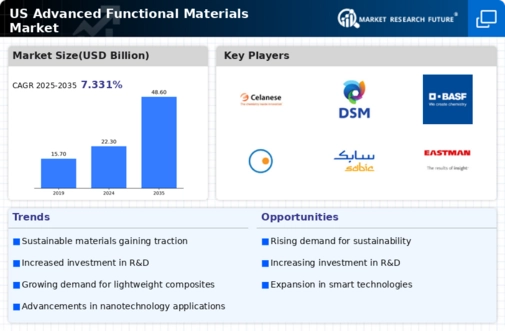The US Advanced Functional Materials Market is characterized by a dynamic and competitive landscape where innovation, technological advancements, and strategic partnerships play pivotal roles in shaping industry trends. Companies operating in this sector are increasingly focusing on developing high-performance materials that cater to a variety of applications, including electronics, automotive, healthcare, and energy.
The competitive insights within this market reveal a range of strategies employed by key players to maintain market share, foster product differentiation, and meet evolving consumer demands. The market is marked by significant research and development investments that drive the introduction of advanced materials with superior functionalities, allowing firms to enhance their competitive edge in a rapidly changing environment.
Celanese has established itself as a leader in the US Advanced Functional Materials Market, primarily through its commitment to innovation and high-quality manufacturing processes. The company leverages its in-depth knowledge of polymers and chemistry to create a diverse portfolio of advanced materials that address specific industry requirements.
Celanese's strengths lie in its robust research capabilities, extensive application development expertise, and an extensive network of customer collaborations. These elements empower the company to deliver tailored solutions that meet stringent performance and regulatory standards. Additionally, Celanese focuses on sustainability initiatives and circular economy principles, which resonate well with current market expectations and contribute to its competitive standing in the US market.
Royal DSM also plays a significant role in the US Advanced Functional Materials Market, showcasing its commitment to advanced materials through a variety of innovative products and solutions. The company specializes in high-performance polymer and composite materials that serve multiple industries, including automotive, electronics, and healthcare.
Royal DSM emphasizes sustainability and bio-based materials, aligning with industry trends toward eco-friendly solutions. Its strengths include a comprehensive product range, strong research and development capabilities, and a solid presence in key industrial segments. The company has actively engaged in strategic mergers and acquisitions to enhance its technological expertise and market reach, allowing it to remain competitive in the evolving landscape of the US advanced materials sector.
With a focus on advanced manufacturing techniques and the development of novel applications, Royal DSM continues to solidify its position within the market.






















Leave a Comment